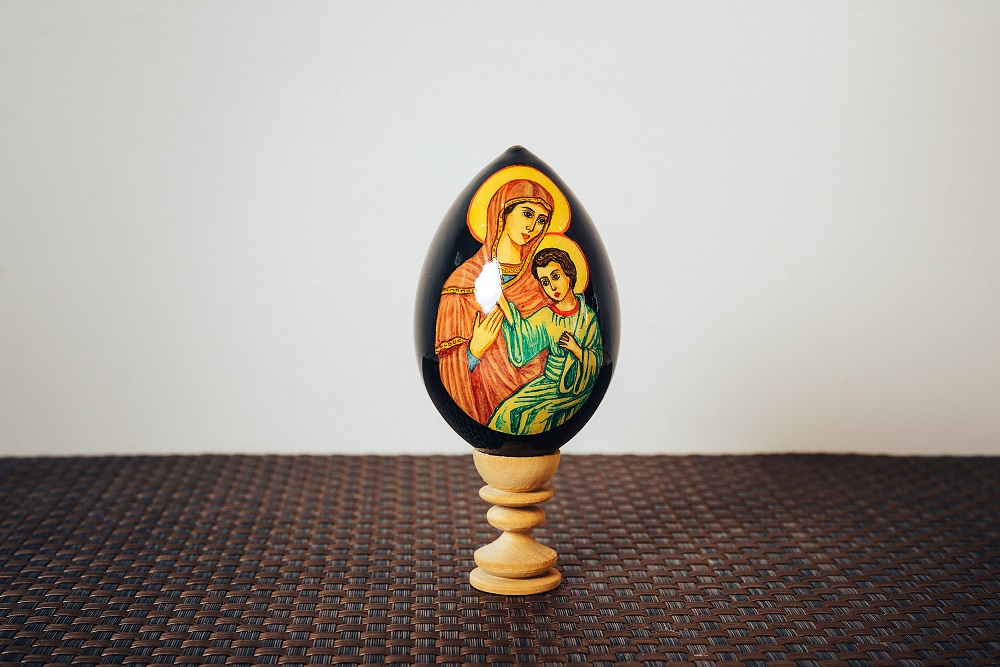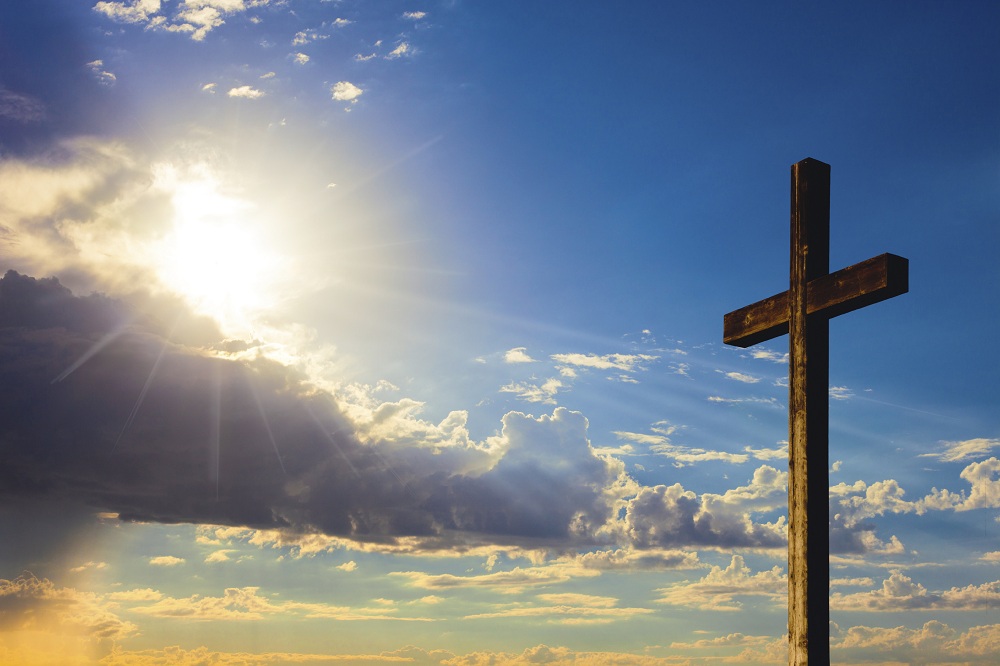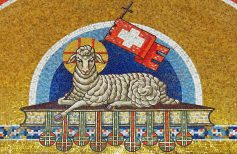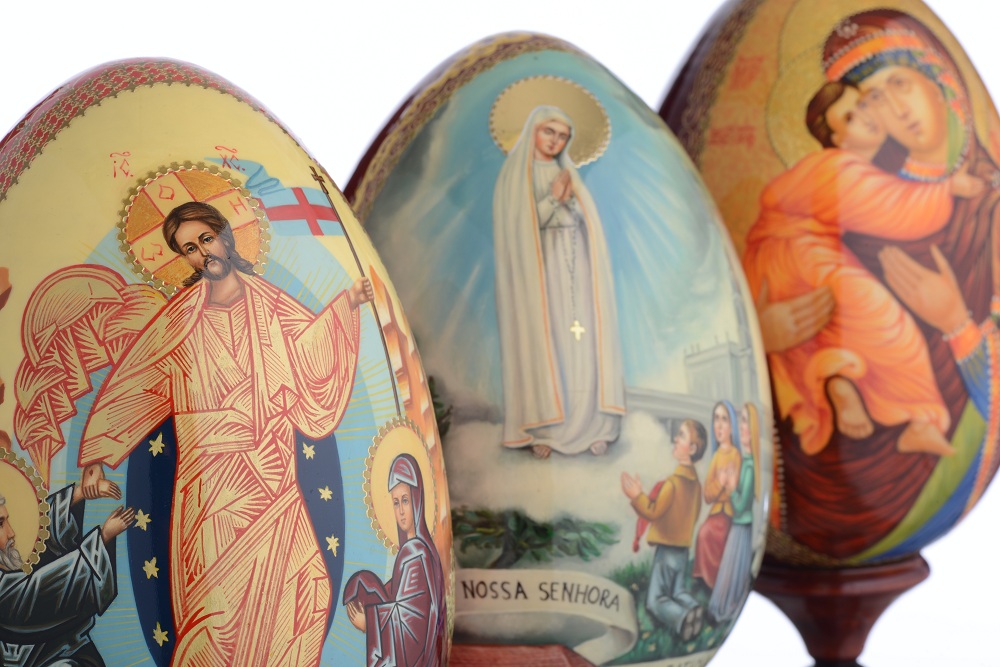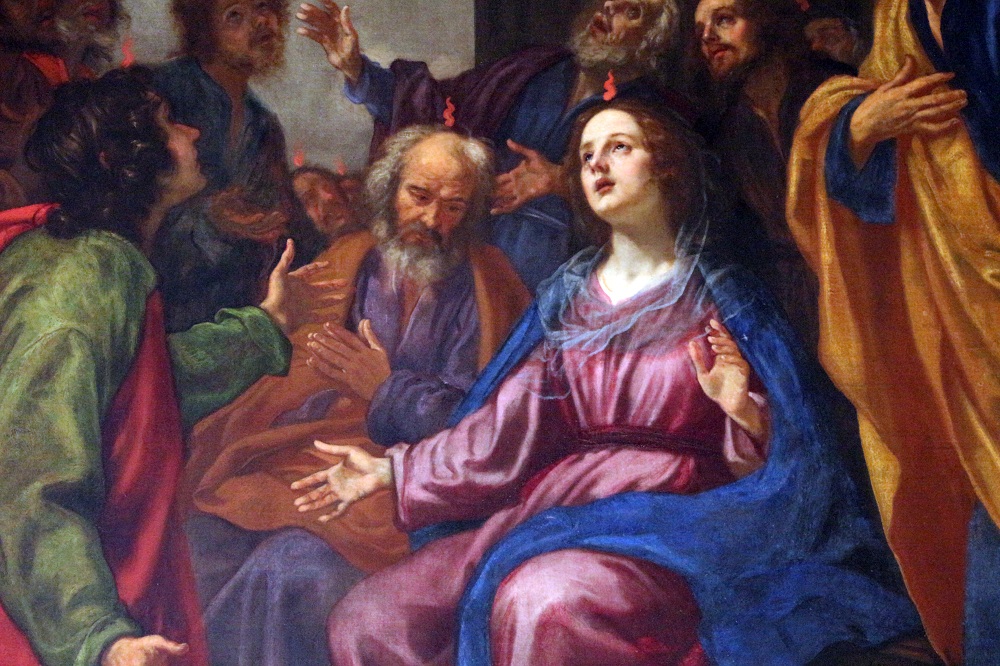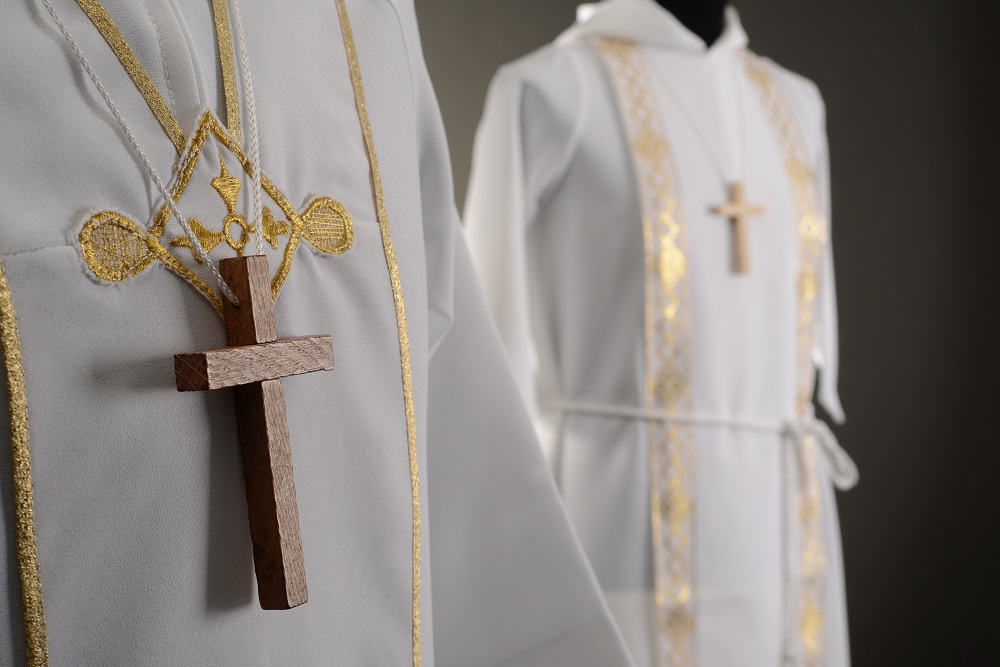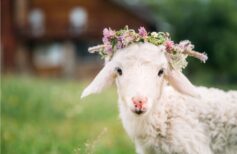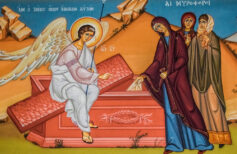Whenever we think of Easter, apart from the religious significance of this festival for Christians, the first thought that probably comes to mind is chocolate eggs, which we give away as gifts for the occasion. The Easter egg is a form gluttony covered with coloured, shiny paper, decorated with ribbons and often accompanied by gifts and surprises inside or applied externally, to bring a smile to both young and old. A festive tradition, it only appears to be commercialised, because in fact an Easter cake par excellence also egg-shaped and it’s certainly not just a coincidence.
In fact, the symbolism of eggs is one of the oldest there is, and has unified countless cultures and religions since the dawn of time. As often happens, Christianity has done
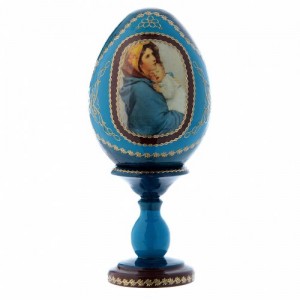
Russian Egg Madonna of the streets Faberge Style
nothing more but take this symbol, strip it of all the pagan declensions and re-offer it in a Christian way. For Christians, the egg becomes a symbol of Christ rising from the dead, coming out of the sepulchre, rolling away the stone, which was in the shape of an egg, in fact. Furthermore the egg, apparently inert and inanimate, holds a new life inside it. This dual symbolism, of the stone of the tomb of Jesus and of the hidden life ready to hatch, make the egg a symbol of the Resurrection, of the Life and Salvation represented by Christ, and the hope of everyman. It is no coincidence then, that the egg was taken over by many artists as the protagonist of their works; first of all the famous ones, hand painted Russian eggs, small masterpieces depicting different religious subjects. Painted Russian eggs depicting the Madonna or Russian eggs depicting the Holy Family or many other Christian symbols.
We started with the meaning of the egg in Christianity, but it is certainly of interest to go back in history a little, and discover what this particular and unique object represented in antiquity, how it evolved over time and through cultural traditions, and ended up coming to us.
The egg as a symbol of life
The egg-life association is, of course, immediate, and must also have been so for our predecessors.
The symbolism of the egg has very ancient origins. Many civilizations identified it as the very origin of the world. The cosmic egg, or egg of the world, was considered by the ancients as a vital and energetic nucleus that floated in nothingness, in the primordial chaos. By closing itself it would generate the cosmos as we know it.
This interpretation occurs in many civilizations, from the Sumerian and Assyrian Babylonians, to the Egyptians, to the Greeks, to the Hindus, then assuming particular characteristics and differentiated in different cultures.
For the Egyptians, the two parts of the egg shell born from the beak of the big Knef duck, breaking away, gave rise to heaven and earth. Also according to Egyptian religion, the symbolism of the egg as an emblem of life goes back to the myth of the Phoenix, which cyclically dies, and then rises from its ashes that give rise to an egg fed by the Sun and the Air. Again, the Egyptians placed the egg at the centre of the four elements: earth, air, fire and water.
In Greek mythology the egg represented the creation, played by Castor and Pollux, the children conceived by Leda and Zeus, the latter in the form of a swan, and born from an egg. Also for the Greeks Eros, the god of love was born from a silver egg laid by Night and fertilized by the North wind. An even older myth, dating back to the pre-Hellenic people of Greece, tells a version of a similar story, in which the goddess Eurinome, fertilized by the snake Ofione, deposited the universal egg into the whirling womb of chaos.
According to the Celts, an egg called Glain was the origin of the cosmos. In northern Europe there was a custom of rolling eggs from the top of a hill to Beltane, to imitate the movement of the sun in the sky.
For the Hindus too, the two parts of the shell of the cosmic egg, one of gold, the other of silver, gave rise to the heaven and earth. The same egg was Brahma, the emanation /creation of the material universe, enclosed in the golden heart of the Egg of the World and in this form slept long in the darkness, before exploding in a golden and burning light, which generated life, in a sort of predecessor of the Big Bang.
The Egg of the World also appears in the Chinese Taoist religion, where Pangu, the creator of the world, was born from the cosmic egg, in which Chaos coagulated, and which contained within it the primordial principles Yin and Yang. These two principles, stabilised until they reached a perfect equilibrium, gave rise to Pangu, who later, with his axe split the Cosmic Egg in two, creating the Earth (Yin) and the Sky (Yang) and placed himself between them to keep them separated, with the help of a turtle, Qilin (a kind of Chimera of the Phoenix and a dragon).
The egg as the origin of the world, therefore, is a symbol of eternal life, which is renewed cyclically, and regenerates itself, throughout time and the seasons. The Greeks, the Chinese, the Egyptians and the Persians exchanged eggs, sometimes decorated and coloured, as a gift for spring festivals, like the spring equinox, to greet the beginning of the new season.
The egg is also a symbol associated with the Female, in all the cults of the Mother Goddess, since it is the role of women to generate the egg, and with it, life.
The egg also featured in Orfism, in Mithraism and in the Dionysian mysteries, always as a symbol of life and creation, and in Alchemy too, where the Philosopher’s Egg can be interpreted as the Egg of the world.
Giving eggs at Easter
We’ve already seen how the custom of giving eggs was widespread in antiquity, especially in conjunction with the arrival of spring, as a symbol of the ‘rebirth’ of nature.
Like the Egyptians before them, Christians also decorated hen’s eggs with crosses or other symbols, and painted them red to recall the blood of Christ. This tradition may have had a considerable boost from the ban, during Lent, of eating eggs. This meant many hen’s eggs were laid that were not eaten. So as not to waste them entirely, Christians may have begun to boil and decorate them. Over time, the tradition of bringing these eggs to church to bless them began. In the Middle Ages, especially in Germany, it was customary to give away simple or decorated eggs for Easter.
Throughout the seventeenth and eighteenth centuries they continued to give children coloured and decorated eggs and hen, or egg-shaped toys, while it was only at the beginning of the nineteenth century that chocolate eggs made their appearance. The first empty chocolate egg that contained a surprise was produced by the English company Cadbury in 1875. Previously, full chocolate eggs had already been manufactured in France and Germany. The first ones would have been made in the times of King Louis XIV, the Sun King. It was the Dutch chemist and master chocolate maker Coenraad Johannes van Houten who discovered, in the early nineteenth century, how to treat cocoa beans with alkaline salts to make them sweet and easier to dissolve in water, and how to extract the butter from them. Subsequently, other discoveries led to the extraction of pure chocolate powder that could easily be modelled and used in moulds. In 1819, François Louis Cailler created the first Swiss factory where chocolate was made into a mouldable dough thanks to a particular machine. Other sources however state that there were already prototypes for making empty chocolate eggs containing small surprises in Turin in the eighteenth century.
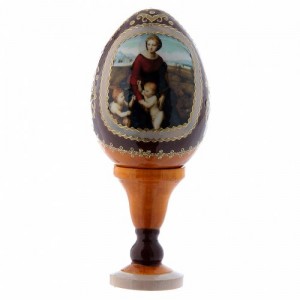
Russian Egg Madonna del Prato Faberge Style
Also at the end of the nineteenth century the fashion for making eggs of gold, silver and platinum, covered with precious stones began to spread. In reality, this custom was already widespread in the Middle Ages, and was only taken up at the end of the nineteenth century. The first person to commission an egg similar to those of the famous jeweller Carl Faberge was the Tsar Alexander III Romanov, as a gift for his wife Marija. Fabergé created an enamelled platinum egg, which contained a second egg, conceived as a golden yolk, inside which there was a golden chick with ruby eyes, wearing a reproduction of the imperial crown on its head. The Fabergé collection of Russian imperial eggs now consists of 52 eggs. Most of these eggs contain others that are smaller, just as precious, as a matrioske. One egg made by Fabergé in honour of the Trans-Siberian railway was decorated with a metallic band engraved with the railway route, and contained a small train made of pure gold.
Returning to chocolate eggs, nowadays, those hand made by confectioners are flanked by large-scale production on the industrial scale. The manufacture and distribution of eggs begins more than a month before Easter, and eggs of all types and sizes, are offered for sale on the market.
Elsewhere, particularly in the Orthodox countries, they continue to prefer giving a hard-boiled hen’s egg coloured with natural colours. The eggs have to be cooked for a long time, until they are very firm. To dye them you can use onion skins or tea leaves to get a brown colour; ivy and nettle leaves give a green colour; saffron and cumin for yellow; red beets for red. You just cook the eggs in the boiling water to dye them, and then fix the colour with a few drops of vinegar.

